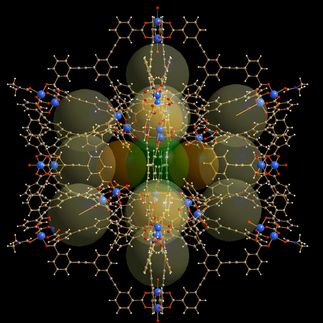On the horizon: a "rinse" for washing machines that dries clothes
Think of it as a kind of chemical clothes wringer
University of Florida engineers have developed a compound that forces clothes in the washer to shed 20 percent more water during the spin cycle than in normal conditions. The result: A load of clothes dries faster in the dryer, saving energy - and reducing homeowners' electricity bills and time spent in the laundry room.
"We feel it's very cost-effective research and convenient for consumers," said Dinesh Shah, a professor of chemical engineering and director of the UF Center for Surface Science and Engineering.
Shah and Daniel Carter, a doctoral student in chemical engineering, will publish their second article about their research this month in Langmuir, a surface science journal. UF has applied for a patent on the research, which was funded with $200,000 from Procter & Gamble, a major manufacturer of laundry detergent and related products.
Carter and Shah said the researchers' key insight was that the spaces between tiny fibers in the weave of fabrics comprise minute tubes, or capillaries, which retain water due to surface tension. It's the same phenomenon that causes a submerged straw to hold water when covered at the other end and lifted out of the surface, Carter said.
The researchers reasoned that reducing this surface tension would reduce the water retained by fabric. They first tested this idea using finger-sized copper containers dotted with drain holes. Filled with fabric and water and placed in a centrifuge, the containers mimicked the conditions of spin cycling washing machines - except that the water loss and fabric retention could be easily measured.
When the researchers discovered that some compounds apparently increased water loss, they expanded their experiments to bigger fabrics and a real washer and dryer. The dryer sits in a crowded lab on a scale, allowing Carter to compare different wet loads by weight to their total drying times.
Their experiments revealed that one ratio of a common detergent and fabric softener - five parts detergent, one part fabric softener - added before the spin cycle forced the clothes to shed 20 percent more water than untreated clothes. The clothes then dried 20 percent faster.
Most read news
Organizations
Other news from the department science

Get the chemical industry in your inbox
By submitting this form you agree that LUMITOS AG will send you the newsletter(s) selected above by email. Your data will not be passed on to third parties. Your data will be stored and processed in accordance with our data protection regulations. LUMITOS may contact you by email for the purpose of advertising or market and opinion surveys. You can revoke your consent at any time without giving reasons to LUMITOS AG, Ernst-Augustin-Str. 2, 12489 Berlin, Germany or by e-mail at revoke@lumitos.com with effect for the future. In addition, each email contains a link to unsubscribe from the corresponding newsletter.




















































